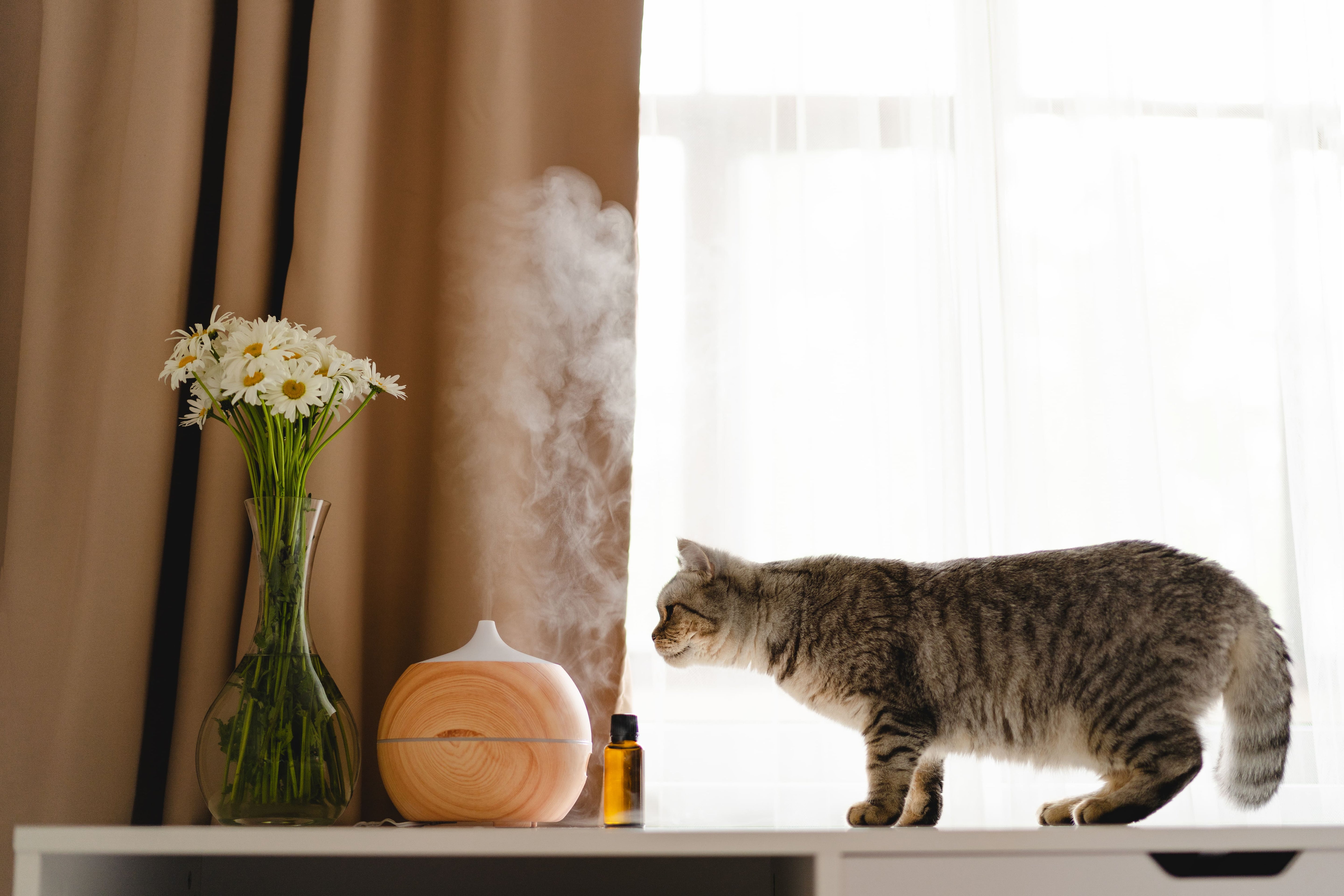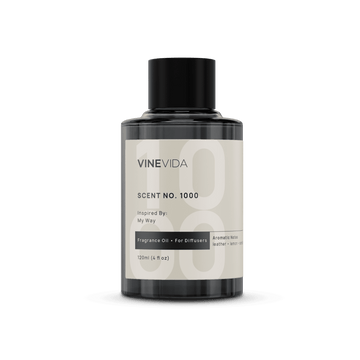The beautiful fragrance of home baking. Harmony and holiday fun. It’s the perfect addition to your aromatherapy diffuser, but is Vanilla essential safe for cats and dogs?
Some essential oils can be pretty harmful to cats, but vanilla is not one of them. Kitty agrees it’s the perfect snoozy evening, but she has asked me to investigate the ins and outs of other essential oils that you may not have realized could pose a risk.
Likewise, since cats have such powerful senses of smell, we talk about how to assess how your animal feels about vanilla essential oil.
What is Vanilla Essential Oil?
It’s bugging us; let’s get this out of the way. We say “vanilla essential oil,” but the product we sell has not been distilled. So there isn’t any vanilla essential oil. Instead, we sell oleoresin, listed under absolutes on our site. For clarity, though, we agree with you; it’s easier to refer to it as an essential oil.
The rest is probably obvious, but just in case it is not…
Vanilla is extracted from the seeds found in vanilla pods. Predominantly grown in Madagascar, it is one of the most sought-after extracts in the world.
What is Vanilla Essential Oil Good For?
Even though vanilla is rarely cited as an aromatherapy oil, it is quintessentially aroma therapeutic. Over and above any other properties it has, it is its smell that creates the magic. It’s one of those fragrances that has a particular odor key, which is, of course, desserts. Immediately, we’re transported to warm, cozy spaces. Maybe it conjures steamy windows in bakeries with excited kids buying home-baked cookies.
Because it's a thick, dark, mysterious oil, it resonates at the pelvic and root chakras. The scent makes us feel secure, grounded, and relaxed. Sultry, languid, and aphrodisiac, it has an almost harem feeling. Lazy, expressive, and exotic.
So, as we can see, it’s a living room oil, a selling your home with a drop in the kitchen secret, and an elixir of the boudoir—all places we’d expect to be sharing with a languid kitty.
Delightfully vanilla essential oil is perfectly safe for your pussy. Take that as you will. Either way works fine.
There is more detailed info about the different uses of the oil in our post “What is Vanilla essential oil good for?” If you have ever raised a son, you will love our write-up on our vanilla product page. Do you know how lads always have to have some game going on with a stick? Look at how one young boy and his stick are responsible for all the vanilla we enjoy today. It’s one of our favorite aromatic tales.
Vanilla essential oil is safe for cats, but there is a broader question at hand…
Do Cats Like The Smell of Vanilla Essential Oil?
We dunno about your cats, but ours like the smell of last week's can of tuna, catnip, and rat wee. Unlike dogs, who properly go to town on the idea of a slice of cake, cats aren’t that into it generally.
A cat’s sense of smell is far more acute than a human's. Where we have around 5 million odor sensors, they have more than 200 million. Their sense of smell is between 9-16 times better than ours. It’s worth considering, then, how much stronger the oils you use will seem to them than they do to you.
They may have four legs, but they will also have likes and dislikes, as humans do. So if they’re not into something, then…well, you know cats…they will make their feelings known.
Always leave the door open so they can leave the room. Vanilla is a sickly sweet and spicy fragrance; it’s up to them when they have had enough.
Getting Down to Your Cat’s Level
If you are interested in how animals respond to essential oils, you might find it interesting to read a book called Help Your Dog Heal Itself by a lady called Caroline Ingraham. She practices something called Zoopharmacognosy. This is the idea that animals self-prescribe based on the smells they find. They know themselves and what they need to get better. Presumably, you have seen your cat seek out grass if she has a lousy belly? She does that through her sense of smell.
A cat’s sense of smell is around 15 times better than ours. It is more complex and varied too. So when we smell just one drop of oil, they perceive it as if it were about 15 drops. Now, for vanilla essential oil, that would be way too sickly for us to endure for long.
Witnessing Cats’ Feelings about Vanilla Essential Oil
If you take time to sit with your cat, they will show you which oils they like and which ones they find unpleasant. They’ll even show you when they’ve had enough.
Set aside time to do this because, we promise, it will likely be the most magical thing you’ll do all day. It’s like a doorway into another creature’s realm.
Sit down quietly next to your pet. Take the top off your oil bottle, and watch the kitty’s eyes and nose. As she experiences it, notice how she closes her eyes. You’ll likely see her nose twitch as the molecules reach her. You can barely even smell the oil, but it’s enough to know the cat starts interacting with it.
You may even notice her start to lick her lips as she enjoys tasting the fragrance molecules in her mouth.
When she turns his head away or gets off the sofa, she’s had enough. It may be she wants to get away from it, or you might find she turns her head back in a few moments to re-engage. If she doesn’t like the smell, she’ll disappear quickly; for fragrances he wants, she’ll hang around a little longer.
What Are The Issues Surrounding Other Essential Oils For Cats?
When humans absorb essential oils, they penetrate our skin and circulate through the body via the bloodstream. Eventually, they find their way to the liver, where enzymes break the chemicals down. This is how we metabolize essential oils. However, cats do not have the same enzymes, so they cannot make this breakdown.
Essential oils high in the chemical group phenols tend to be problematic. This is because phenols are sharp and harsh chemicals and are in high numbers in oils we use to fight infections and colds.
The main essential oils you would have to AVOID are eucalyptus oil, tea tree, cinnamon, citrus oils, peppermint, pine, wintergreen, and ylang ylang.
Usually, we might say, “Well, we are not going to give them to them orally, so we should be ok.” However, if droplets were to fall onto her, then she grooms herself, we still have an issue with ingestion likewise, if we decide to use any of these oils topically. They still won’t weaken as they are absorbed.
We can see how using these other oils in diffusers can become problematic.
We place essential oils into the water, but oils and water do not mix, so they remain undiluted.
Tiny droplets are projected into the air, then often land on our pets. Even reed diffusers and evaporators theoretically present the same risk if a cat spends too much time in a room with essential oils.
The vanilla essential oil has low numbers of phenols, so it poses no danger to your feline pal.
Symptoms of Poisoning
So, just like anything, there will always be exceptions that prove the rule. The best thing you can do is watch. And when introducing anything new into your home, it’s worth keeping an eye out to see how everyone is affected.
Where humans tend to complain of a headache or a sore throat from solid fragrances, cats develop runny noses or suffer burning sensations in their throats. Watch out for them drinking more water than usual. Drooling might signify they feel nauseous. Also, be attentive to them vomiting or having difficulty breathing. Coughing up hairballs can also indicate some kind of respiratory irritation.
If any of these happen, it’s important to get them out into the fresh air. If not, seek urgent veterinary assistance. Remember, you are witnessing poisoning and need to see it immediately.
Summary
Is Vanilla essential oil safe for cats? It is, but there aren’t many reasons to use it. There are unlikely any occasions when you’d use it topically on them. In terms of diffusion, it’s OK to have it ticking away to scent the room. Ensure the door is open and they have easy ways to exit when they have had enough.















